
Archive
515 posts

Silage preparation is an important feed-conservation method in the mountain area of Switzerland. To determine the ensilability of various typical plant populations in the mountain area, four plant populations were investigated on a laboratory scale, and grass silages from 31 commercial farms from the Ybrig-Einsiedeln mountain region were collected and analysed. According to the fermentability…

Prediction of the fatty acid composition in backfat of pigs as breeding tool
Pork fat is a major constituent of many meat products and its quality therefore of high relevance for meat processors. The most important fat quality characteristics – oxidative stability and consistency – are well described by the amount of polyunsaturated fatty acids (PUFA) and the iodine value. In Switzerland, these two traits are even part…
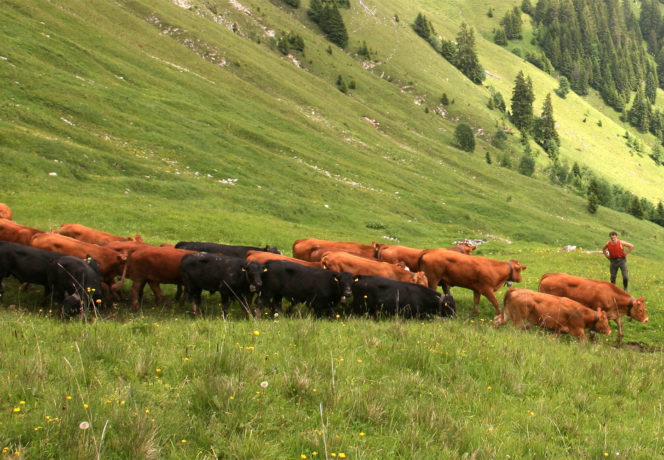
Economic approach of the LACTOBEEF project
Summering fattening cattle on alpine pastures has the advantage of utilising the whey and optimising the number of animals on said pastures. The LACTOBEEF project followed two mountain stockbreeders from the Gruyère Pays d’Enhaut Regional Nature Park. Traditionally, these stockbreeders fatten pigs on their whey and raise dairy heifers. The trial addresses the economic consequences…

Autumn intermediate crops and development of honey-bee colonies
Establishing an autumn vegetation cover following the grain harvests is common practice in the farming community. Although certain beekeepers look forward to this foraging opportunity, others suspect a weakening of the bee colonies after they forage on these cover crops, and fear the premature exhaustion of the winter bees. The experiment presented here attempts to…

Ingestion of whey on alpine pastures by beef cattle and quality of the meat
Whey is present in large quantities in the alpine-cheese production zones, and represents a source of energy that should be utilised. The quality of the meat from 96 beef cattle which either consumed or did not consume this by-product was compared in two trials carried out 2012 and 2013. The animals, with an average live…
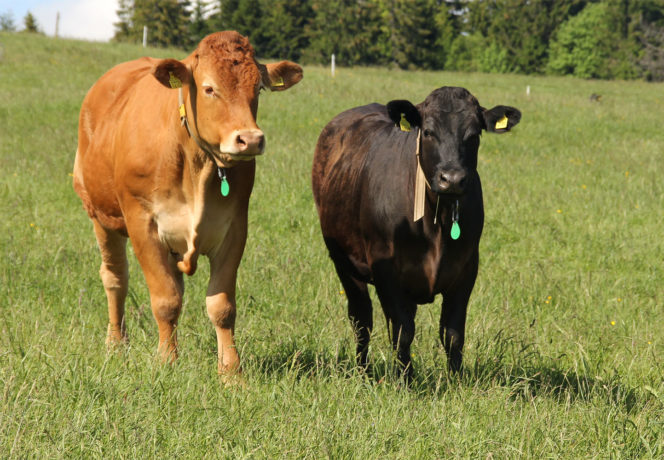
Observations about grazing: grass supply and ingestion
The aim of this study was to compare the supply of grass and the intake of three herds (test variants) over the 2012 and 2013 grazing seasons. The first herd received no supplement (control group G), whilst the other two benefited respectively from a barley (B) and whey (W) supplement. The quantity of grass offered…

Growth performance and feed intake behaviour of whey fed beef cattle on an alpine pasture
In alpine-cheese production areas, whey represents an important source of available energy which is both largely untapped and problematic for the environment if it is not properly disposed of. Its utilisation by beef cattle was studied in two trials, each comprising 48 heifers and steers belonging to different breeds or crosses of beef breeds, and…

Utilisation of whey on mountain pastures by beef cattle
Mountain pasture areas in Switzerland are faced with a dual challenge: halting the advance of the forest, and dealing with the whey which is a by-product of alpine cheesemaking. Beef cattle could contribute to the sustainability of mountain pastures by increasing pasture pressure and reducing environmental impact through the use of the whey in situ.…

Feeding and rumination behaviour of dairy cows fed by varied feeding regimes
The effects of varying feeding regimes on chewing behaviour and faecal particle size distribution were investigated in an experiment with 23 lactating Swiss Fleckvieh cows. The herd was located at an organic dairy farm with a low concentrate feeding regime as required by the regulations of the organic association Bio Suisse. In a two factorial…

In vivo digestibility in sheep of molassed beet-pulp silages
Molasses from the manufacture of beet sugar enables an improvement in the fermentation quality of beet-pulp silages. An in vivo trial with sheep was carried out at Agroscope Posieux in order to ascertain the digestibility of molassed pulp silages. Adult wethers (n = 4 per treatment; 83.9 ± 9.3 kg average weight) were given rations…

Silage quality: pressed sugar-beet pulp with added molasses
During the sugar production in 2014, around 4 % molasses was added to the pressed sugar-beet pulp in both the Aarberg and Frauenfeld sugar refineries. In the present survey, we investigated the influence of higher additions of molasses on silage quality and aerobic stability. Zero, 7 or 14 % molasses was added to the pressed…


Opti-Milk Project: economic efficiency of the full-grazing strategy – results from 2000 to 2010
In the project Opti-Milk (2000–2004), the technical feasibility of the fullgrazing strategy with seasonal calving in spring (low-cost strategy) for dairy farms on the Swiss Plateau was shown. The good economic prospects of the strategy based on budgets and predicted costs during the project could be verified with an analysis of the total costs on…
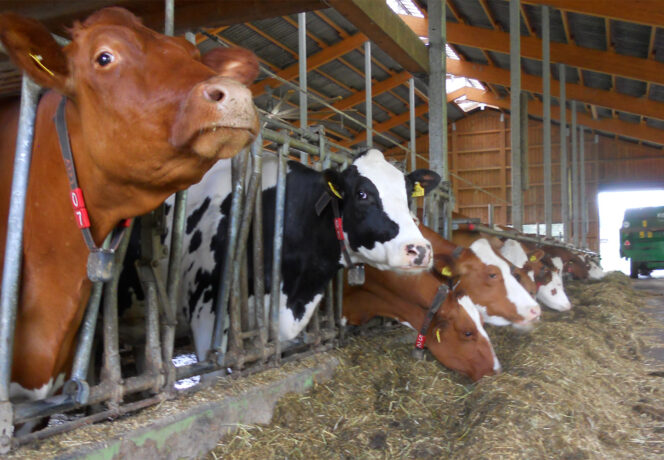
Opti-Milk Project: economic efficiency of the high-output strategy – results from 2000 to 2010
In the project Opti-Milk (2000–2004), the technical feasibility of the highoutput strategy for dairy farms on the Swiss Plateau was shown. The good economic prospects of the strategy based on budgets and predicted costs during the project could be verified with an analysis of the total costs on dairy farms from 1999 to 2011. The…
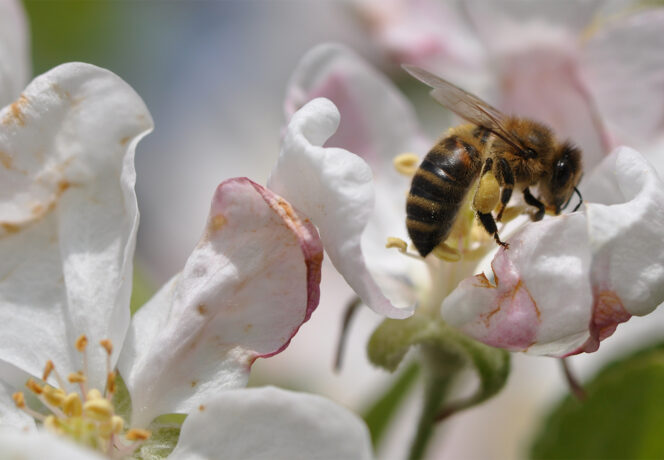
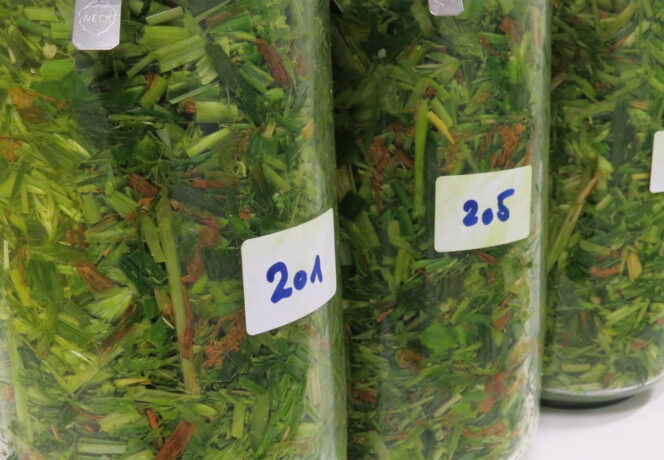
Quality of whole-crop silage from triticale, oats and forage peas
Experiments with various mixtures containing triticale, oats and forage peas were carried out at Agroscope Posieux in 2012 and 2013. The crops were harvested on two dates, chopped, and ensiled in laboratory silos. In addition, the influence of a chemical silage additive on lactic acid fermentation as well as the aerobic stability was studied for…

Digestibility and degradability of silages from whole-plant pea–cereal mixtures
Requiring few inputs, protein plant–immature cereal mixtures can guarantee forage stocks in times of shortage. In order to test whether and how the principle of additivity predicts nutritional value, we conducted in vivo digestibility tests and in sacco degradability tests (crude protein degradability, CPD) to evaluate silages from two mixtures with different protein-plant (i.e., pea)…

The role of the Franches-Montagnes on the Swiss horse market
Like many other local breeds of European origin, the Franches-Montagnes (FM) must fight against a fall in population and number of births, as well as a lack of profitability at the production level. As part of preparing a strategy report for preserving the FM breed, Agroscope Swiss National Stud Farm SNSF investigated the market compliance…

Instruments for on-farm animal welfare assessments in beef production
Maximum animal welfare is a core concern in organic farming. With a view to improving animal welfare and making further progress in meeting animal welfare requirements, German and British organic farming associations have developed on-farm animal welfare assessment instruments. These instruments can be applied by the farmers themselves and in the context of organic inspections.…
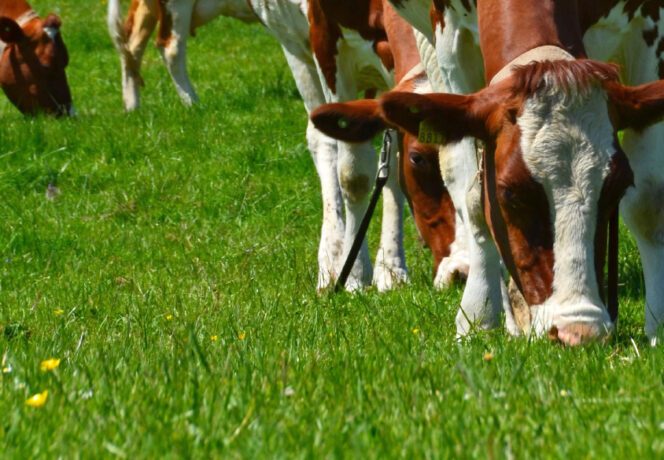

Hay or haylage production from two grass mixtures
For some time now, special grass mixtures have been available for the production of hay and haylage for horses. Field-dried hay is widely produced because many horse owners prefer this roughage to haylage. The aim of the trial was to study the nutrient contents – in particular, the sugar and fructan contents – of two…

Identifying ideal beef and dairy crossbreeds to optimise slaughter yields
Not every beef and dairy breed cross results in equally high slaughter yields. In Switzerland, however, no recommendations on the ideal pairings of beef and dairy breeds are available. This study aims to demonstrate which crossbreeds produce the best returns in terms of carcass weight, conformation and fat cover. The data set consisted of 601…


Effect of preservatives in moist hay
Field-dried hay must be sufficiently dry at harvest for problem-free storage. Alternatively, preservatives that prevent heating and spoilage may be added to the hay. In a trial, the efficacy of various microorganisms (lactic acid bacteria, yeasts and enzymes) as well as of a product containing various acids was tested in moist hay with a DM…

Intake of a dry or a moist ration by suckler cows
The effect of type of ration on feed intake was studied in a trial with 36 lactating cows of the Angus (AN), Limousin (LM) and Limousin x Red Holstein cross breeds (F1) during the first four months of lactation. Two iso-energetic rations fed ad libitum were compared: a dry ration (D) composed of hay and…

Determination of fatty acid composition in feed – analytical methods
This paper illustrates the importance of the analytical method for the determination of fatty acid composition in feed. In Switzerland, not only the lipid content but also the fatty acids profile are necessary to formulate a ration that will produce an optimum quality of fat in the pig carcass. Results of this study showed that…

The presence of experienced piglets does not promote the growth of newl weaned piglets
In a feeding trial the hypothesis was tested that the presence of experienced piglets facilitates the adaptation of newly weaned piglets to solid food. The 72 four-week-old piglets in the experimental group were mixed at weaning with 12 piglets which had been weaned one week earlier, whereas their 72 siblings in the control group were…
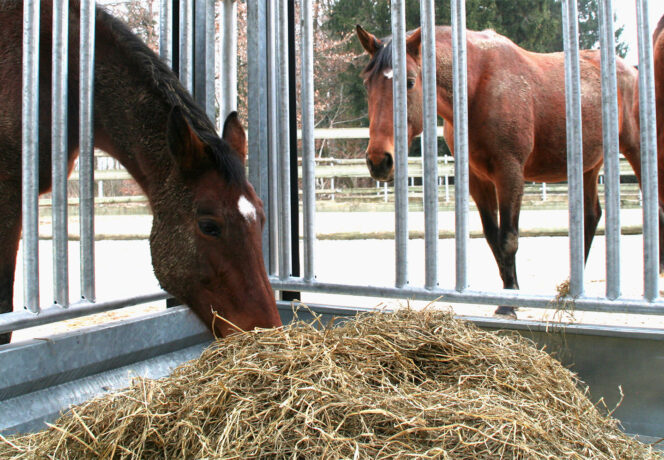
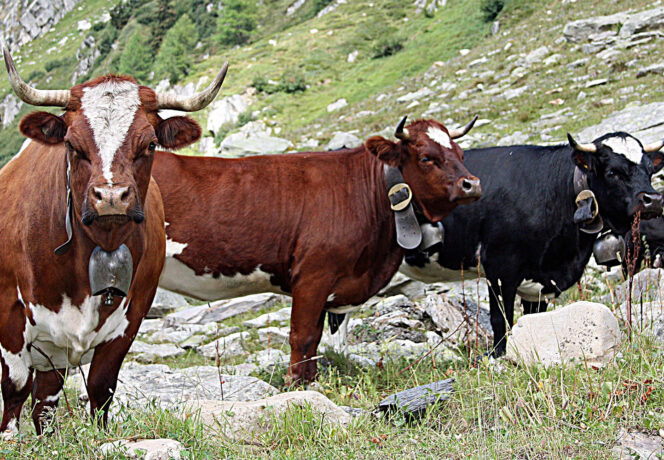

Forages in the light of NIRS
An insight into the determination of the chemical composition of forages via NIRS is presented. Predictive models developed at the Agroscope Institute for Livestock Sciences ILS show the typical values: R2 > 0.96 for dry matter (DM), crude protein (CP), ADForg, NDForg, crude fibre (CF), cellulose, ash, fat, sugar and starch content in hay and…